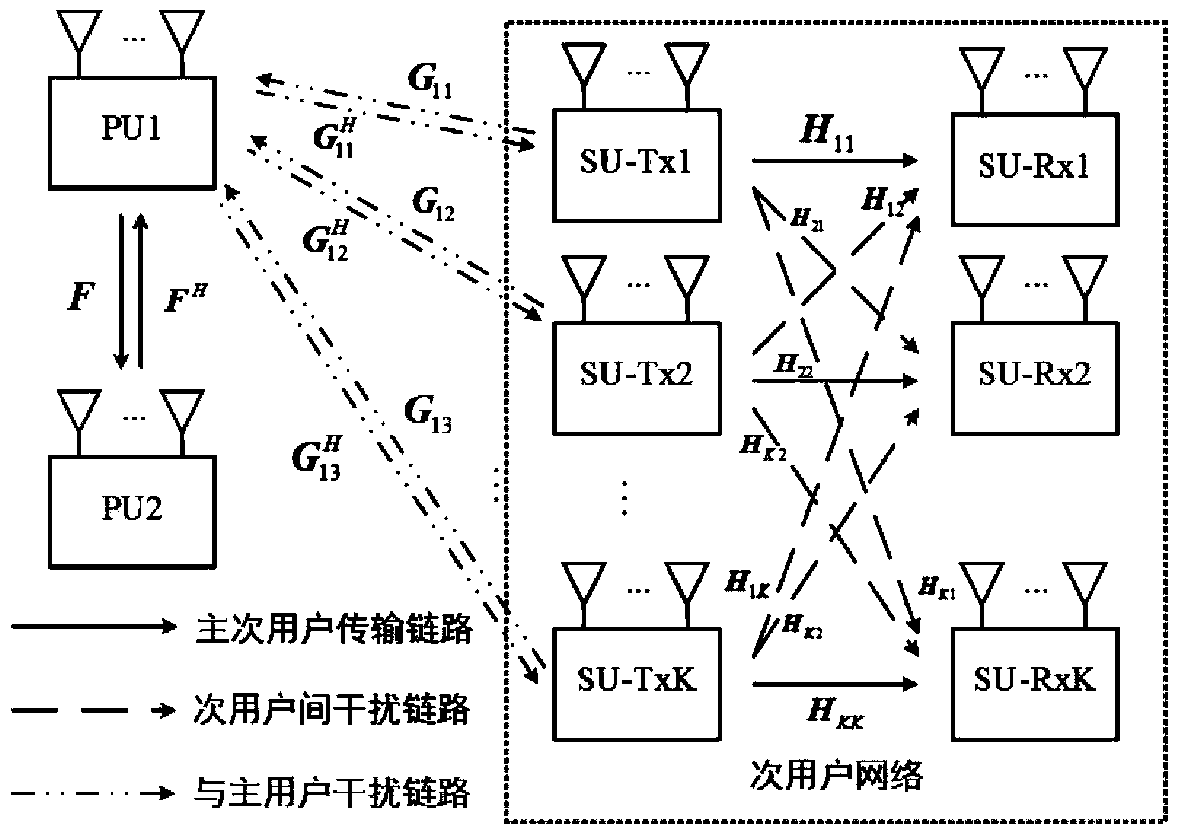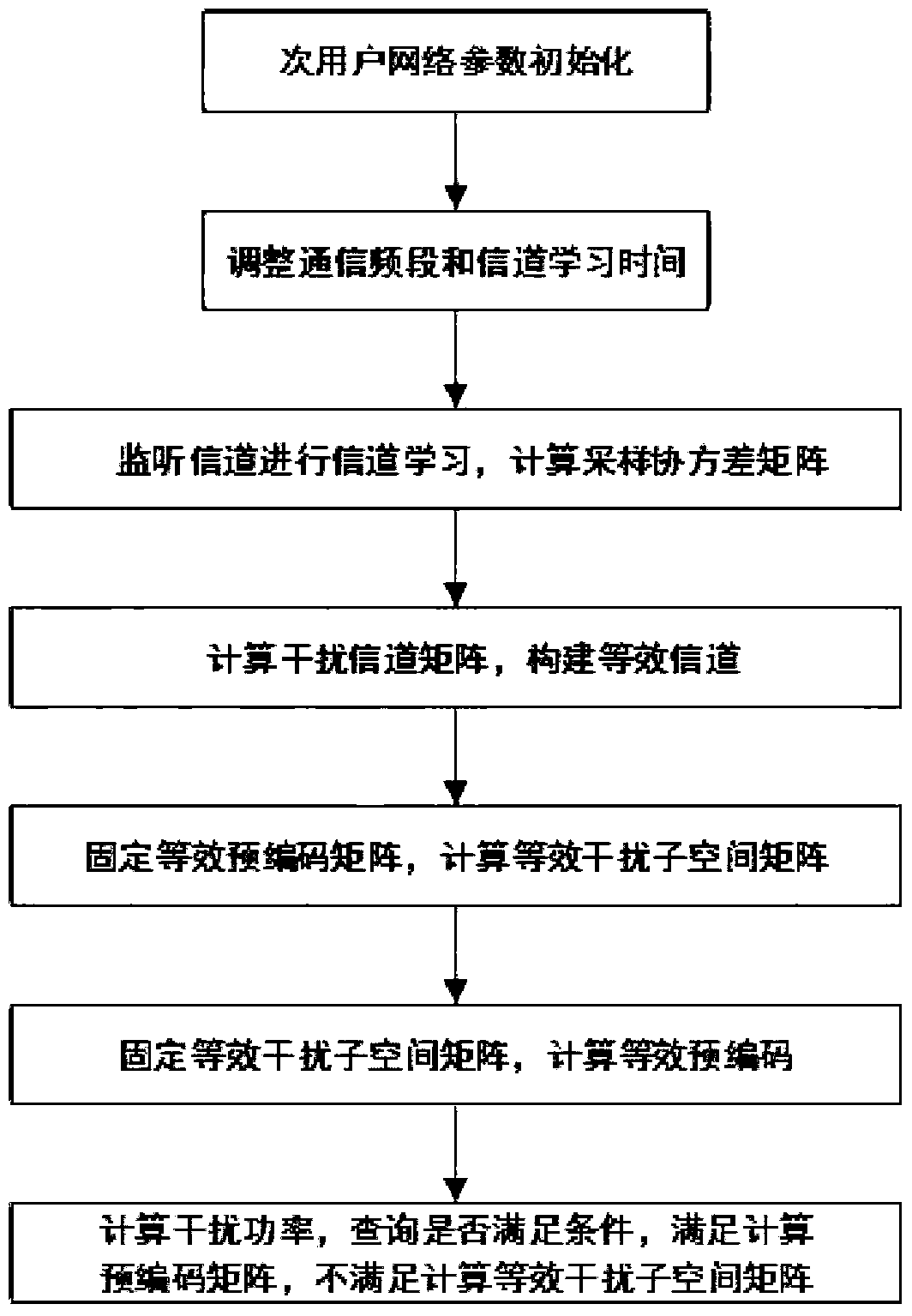Spectrum sharing method based on channel learning in MIMO cognitive radio interference network
A cognitive radio and spectrum sharing technology, applied in wireless communication, network planning, electrical components, etc., can solve the problems that the algorithm cannot be directly applied, and the lack of control of secondary user interference power leakage
- Summary
- Abstract
- Description
- Claims
- Application Information
AI Technical Summary
Problems solved by technology
Method used
Image
Examples
Embodiment 1
[0035] Embodiment one, see image 3 As shown, a spectrum sharing method based on channel learning in a MIMO cognitive radio interference network includes the following steps:
[0036] Step 1. According to the secondary user's communication requirements and antenna configuration, determine the degree of freedom d of each user's transmission k , set the secondary user internal interference threshold Γ k , select the detection time length;
[0037] Step 2. The secondary user selects the communication frequency band and channel learning time, monitors the channel status in real time, and uses the received signal y 1k (n), calculate the sampling covariance matrix pair sampling covariance matrix Do eigenvalue decomposition R ^ 1 k = V 1 k Λ 1 k ...
Embodiment 2
[0042] Embodiment 2 is basically the same as Embodiment 1, except that in step 4, the equivalent interference subspace matrix C is constructed l Specifically, according to the alternate minimization IA algorithm, the interference power leakage is described by the Frobenius norm of the matrix distance between the actual interference signal space and the preset interference space at the receiving end, and the spectrum problem is transformed into: min Σ l = 1 K Σ k = 1 , k ≠ l K ...
Embodiment 3
[0043] Embodiment 3 is basically the same as Embodiment 1, except that in step 5, the equivalent interference subspace matrix C is used l Symmetry Calculation of Subscripts k and l It specifically includes: fixing the equivalent interference subspace matrix C of each user l , using the symmetry of the subscripts k and l, we get min A k H A k = I Σ l = 1 K Σ k = 1 ...
PUM
 Login to View More
Login to View More Abstract
Description
Claims
Application Information
 Login to View More
Login to View More - R&D
- Intellectual Property
- Life Sciences
- Materials
- Tech Scout
- Unparalleled Data Quality
- Higher Quality Content
- 60% Fewer Hallucinations
Browse by: Latest US Patents, China's latest patents, Technical Efficacy Thesaurus, Application Domain, Technology Topic, Popular Technical Reports.
© 2025 PatSnap. All rights reserved.Legal|Privacy policy|Modern Slavery Act Transparency Statement|Sitemap|About US| Contact US: help@patsnap.com



